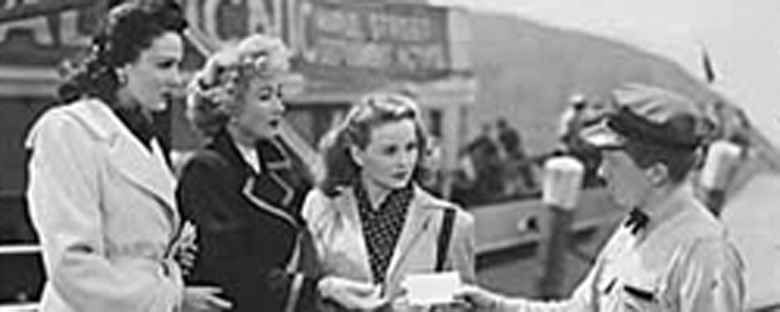Reviews
Joseph L. Mankiewicz
USA, 1949
Credits
Review by Matt Bailey
Posted on 20 February 2005
Source Fox Studio Classics DVD
There are certain character actors in the classical Hollywood cinema the appearance of whose names in the credits of a film ensures a worthwhile viewing experience. Among them are Charles Coburn, Una O’Connor, Marjorie Main, Eugene Pallette, Edward Everett Horton, Eric Blore, Franklin Pangborn (the last three all “gay as bitchwolves” according to George Cukor, who ought to have known), Joan Blondell (who segued from leggy leading lady of the ’30s to comedic standby of the ’50s with great ease), and a swarm of others. At the top of the heap is the great Thelma Ritter. Though she appeared in little more than a couple of dozen films in the span of two decades and never played the lead in any of them, she often stole every scene in which she appeared.
Her first film role was a small, uncredited bit in Miracle on 34th Street, her second, a thankless part as a secretary in Call Northside 777 that ended up on the cutting room floor. Seemingly destined never to get a break, Ritter next got a role in a film by a director whose every film had been a miserable flop. The role was an uncredited part as a maid, but the director was Joseph L. Mankiewicz and the film was A Letter to Three Wives. Released in the winter of 1949, the film was lauded with three Academy Award nominations (Best Picture, Director, and Screenplay) the following year, winning two of them. A little of the glory rubbed off on Ritter, as she actually received second billing on her next film and was soon being nominated for (yet never winning) her own Academy Awards year after year in the 1950s.
If Ritter had been the only good thing about the movie, however, it would not have been the first time. Always excellent in often less-than-excellent material, Ritter suffered the fate of many women of a certain age or of a certain type who made the best of a career of maid roles, secretary roles, and all-around second fiddle roles. A Letter to Three Wives, on the other hand, is a film that not only offered a great role for Ritter, but also offered a half-dozen other superb roles, all filled by a mix of first-rate actors both tyro (Paul Douglas, Kirk Douglas, Jeanne Crain) and veteran (Ann Sothern, Jeffery Lynn). Yet if it seems strange that a film so lauded half a century ago and responsible for the advancement of so many young careers is almost unspoken of now, consider that Mankiewicz’s next film was All About Eve. Nominated for a still-record fourteen Academy Awards (and winning six), its success was bound to overshadow any achievements Mankiewicz and most of his collaborators on the film had ever done or would go on to do.
Much of what makes All About Eve such a brilliant film was used previously (and to good effect) in A Letter to Three Wives: the witty, omniscient narrator; the complex flashback structure; the arch, literate dialogue; even the themes of usurpation and comeuppance. Of course, this does not mean that A Letter to Three Wives was merely a dress rehearsal for a more perfectly-practiced film. Though it has its flaws (the weakly comic first act in particular), Letter is an exemplary product of a film studio at the peak of its powers playing to the strengths of gifted but idiosyncratic writer-director. In other words, lightning did strike twice for Joe Mankiewicz.
We don’t do comments anymore, but you may contact us here or find us on Twitter or Facebook.



